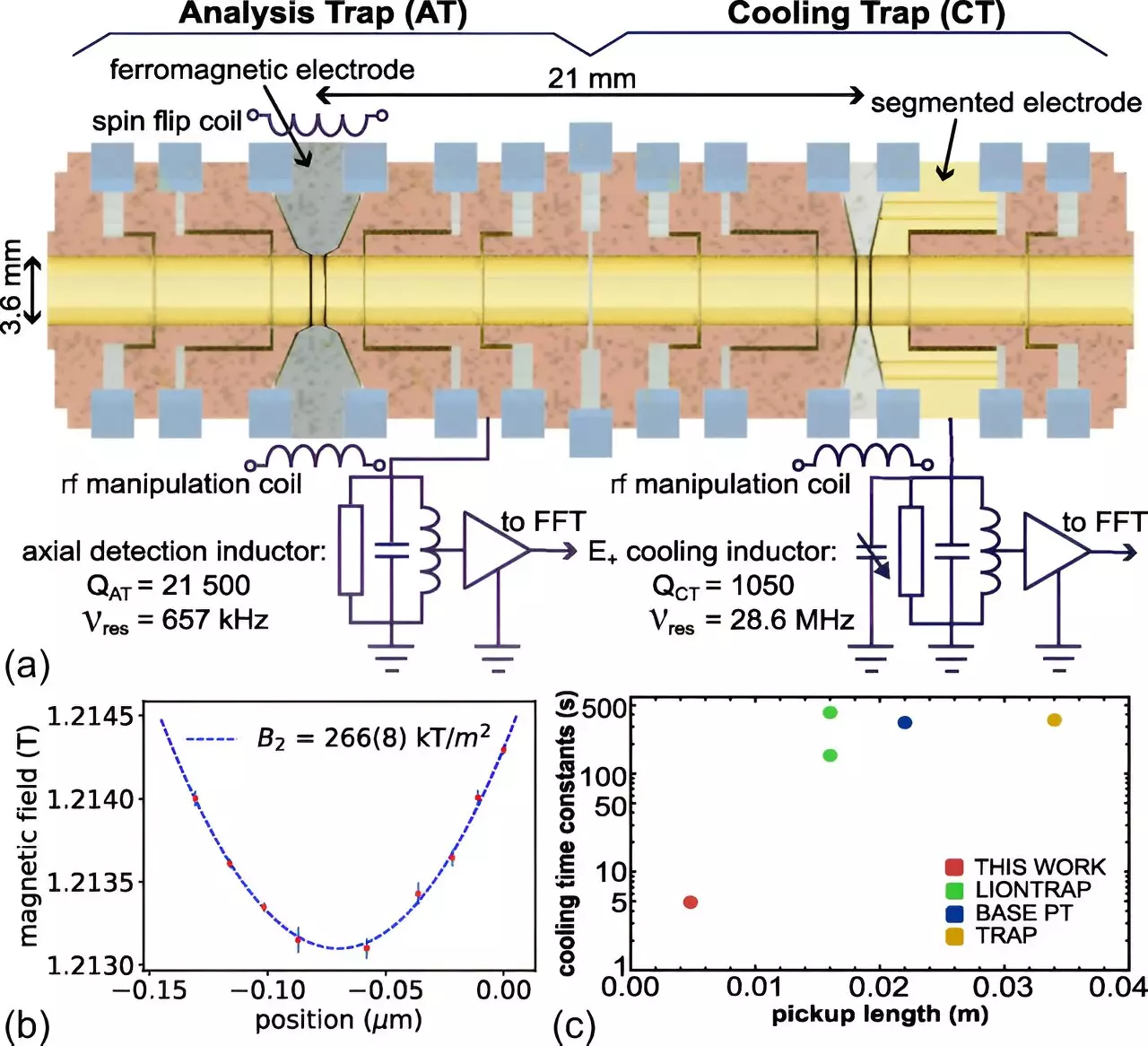The longstanding question of why the universe contains more matter than antimatter has puzzled physicists for decades. After the Big Bang, it is believed that equal amounts of matter and antimatter were created, leading to annihilation upon collision. However, the existence of material objects contradicts this theory, indicating an imbalance or asymmetry in the universe. The BASE international research collaboration at CERN, led by Professor Dr. Stefan Ulmer, aims to shed light on this issue by measuring the mass and magnetic moment of antiprotons with unprecedented precision.
One key breakthrough achieved by the BASE collaboration is the development of a trap that allows for rapid cooling of individual antiprotons. This innovative trap, known as the “Maxwell’s daemon cooling double trap,” can cool antiprotons to extremely low temperatures in a fraction of the time compared to previous techniques. Dr. Barbara Maria Latacz, the lead author of the study, highlights the importance of cooling antiprotons to 200 mK to differentiate between spin quantum states. With the new cooling method, the time required to cool antiprotons has been reduced from 15 hours to just eight minutes, significantly streamlining the experimental process.
Through high-resolution measurements of spin-flip quantum transitions in ultra-cold antiprotons, the researchers aim to determine whether the magnetic moments of protons and antiprotons are identical. Professor Stefan Ulmer emphasizes the need for meticulous measurements to detect even the smallest differences in magnetic moments between the two particles. The BASE collaboration has already achieved remarkable results, with an error rate reduction of over 1,000 times in spin identification and a magnetic moment difference of up to one billionth between protons and antiprotons.
Looking ahead, the researchers plan to construct a mobile particle trap that can transport antiprotons from CERN to a new laboratory at HHU. This mobile trap is designed to further improve the accuracy of measurements by a factor of 10 or more. By storing individual antiprotons in traps for extended periods using magnetic and electric fields, researchers can conduct targeted measurements to uncover subtle differences between particles. The development of such traps, including Paul traps and Penning traps, has paved the way for groundbreaking advancements in particle physics.
The work conducted by the BASE collaboration at CERN represents a significant step forward in understanding the matter-antimatter imbalance in the universe. By refining techniques for measuring the mass and magnetic moment of antiprotons with unparalleled accuracy, researchers are poised to unravel the mysteries of particle physics and expand our knowledge of the fundamental forces governing the universe. The ongoing efforts of scientists like Professor Ulmer and Dr. Latacz exemplify the dedication and ingenuity required to tackle some of the most profound questions in modern physics.


Leave a Reply